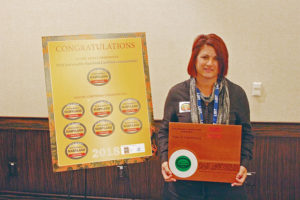Dominance from Start to Finish
Blair Garrett
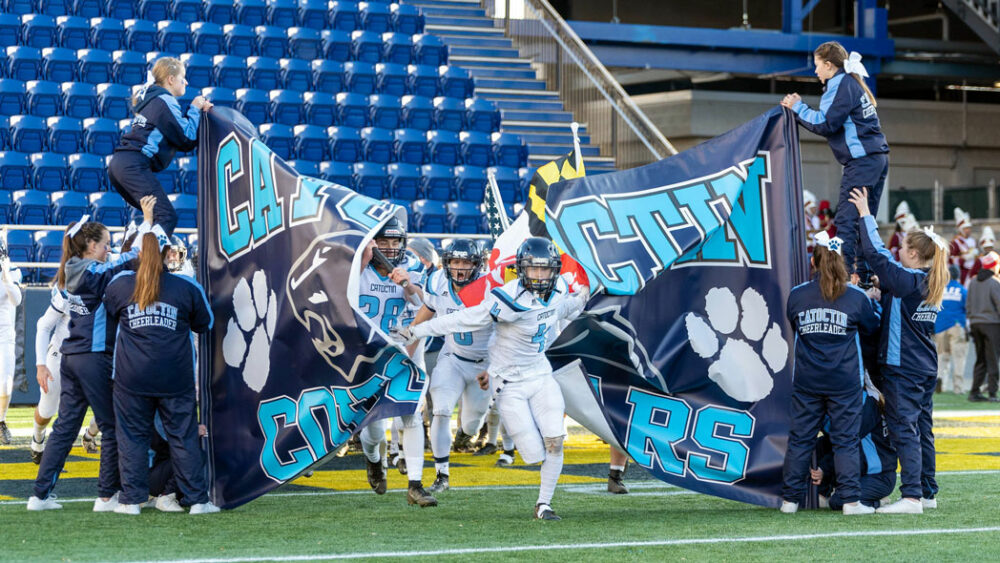
Catoctin High Football clinched its second state championship Saturday, December 7, defeating the Poets of Dunbar High School (Baltimore) 31-8 in a Maryland Public Secondary Schools Athletic Association (MPSSAA) 1A matchup.
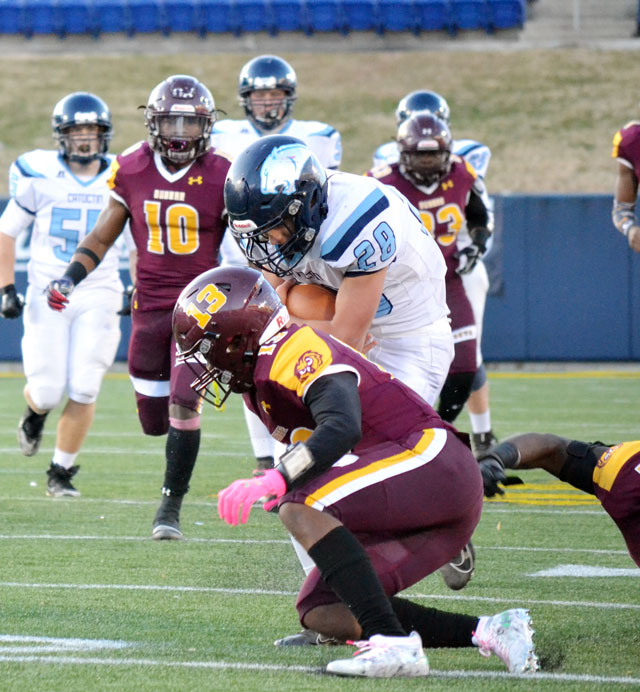
The Cougars stormed through the playoffs, yielding opponents just 41 points over the team’s five playoff victories while posting a monstrous 213 points on offense.
It was a clash of the best of the best, with both teams flattening semifinal opponents by more than 40 points. An unstoppable force versus an immovable object scenario set a collision course for the 1A State Championship game, with only one possible victor.
The teams’ last matchup against each other came back in Catoctin’s historic 2009 run, where they edged Dunbar 13-12 en route to the team’s first-ever state championship. The parallels to this season were apparent, and the Cougars had the confidence to replicate that result once again.
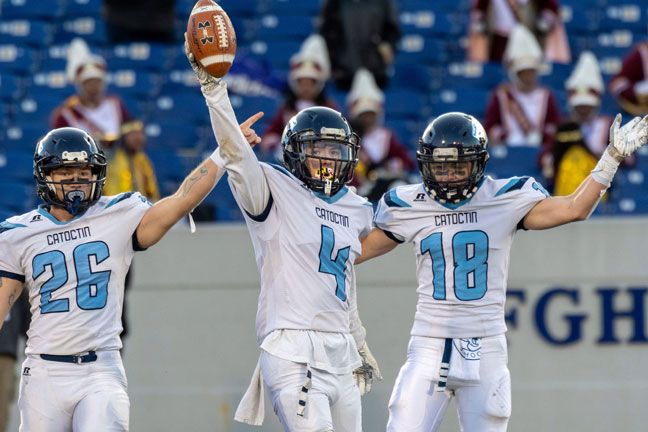
“The coolest thing about it is there were only three of us [coaches] when we won our first championship,” head coach Doug Williams said. “Getting to be there with my assistant coaches and players who haven’t done that is special.”
With everything on the line, the only thing left to do was execute, and Catoctin did that in a near-flawless manner from start to finish.
As the Cougars took the turf at Navy-Marine Corps Memorial Stadium in Annapolis, the boys came ready to play, exposing Dunbar mistakes to shock the Poets over the first quarter.
On the first play of the game, Dunbar fumbled to the benefit of Catoctin, laying the groundwork for a theme that would plague the Poets all night long. Turnovers repeatedly cut possessions short for the perennial 1A playoff powerhouse, and the Catoctin defense was ready at every turn to send its offense back onto the field.
“Our defensive coaches had Dunbar very well scouted,” Williams said. “The staff and players all bought into the program, and it made us successful.”
The Cougars had too much firepower to put the ball in their hands with excellent field position, and quarterback Ryan Orr made quick work of the defense in the first half, connecting passes across the middle to put the boys in blue within striking distance. As it has all season, the running game continued to chew up yardage with each play.
Dunbar had successful drives down the field, but a mental mistake led to a red-zone interception for Catoctin, effectively thwarting any momentum for the Poets and preserving the shutout.
A series of mistakes kept the Catoctin offense on the field, but the Cougar defense managed to punish the Poets with a pick-six to continue frustrating the opposing quarterback.
Despite the lopsided turnover ratio, the Dunbar offense had its moments where possessions were threatening. After 24 unanswered points by Catoctin, Dunbar made its first significant impact of the game with a beautiful ball over the middle to Deairus Carr, who slipped between the defense, shook off a tackle, and cruised into the end zone to get his team on the board.
Dunbar’s message was loud and clear, the team needed to stop the bleeding, and shutting down Catoctin’s run game was necessary if the Poets were going to turn the game around. The Cougars’ bread and butter all season was its slashing runs with running back Carson Sickeri, but Dunbar had keyed in and cut his drives repeatedly short throughout the second quarter.
Fortunately for Catoctin, Sickeri did what he does best and found a running lane to break through the Poets’ defense for a huge chunk of yardage. Sickeri’s run eventually set up another ball over the top to Travis Fields, for his second touchdown of the game.
With a 31-8 lead at halftime, the Cougars just needed to play solid defense and maintain long possessions to close out the game and capture the team’s second championship of the decade.
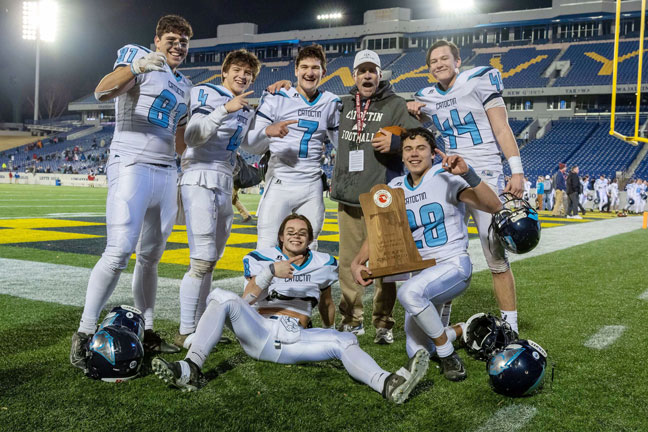
Coach Williams and company continued to pour on the pressure, bottling up Dunbar’s offense and preventing the Poets from stringing together a successful drive.
As Catoctin continued burning the clock, the Gatorade bath watch was on, and the Cougars successfully doused several coaches in the only ice bath a person would ever be excited about.
The final buzzer sounded, the crowd went wild, and players stormed the field in what was undoubtedly the most exciting game of their lives.
Through the biting cold temperatures, the fans stood in unison as their hometown friends and family celebrated a near once-in-a-lifetime achievement.
“The community we live in is amazing,” Williams said. “We were the
smallest school of the championship winners, and we were the loudest. That’s
awesome.”
The 2019 Catoctin football
team’s legacy of dominance has been solidified, with the team’s 13-1 season
ending with the MPSSAA 1A Championship trophy in hand. A big congrats to the
players, coaches, and families that made this season so great. Go Cougars!

